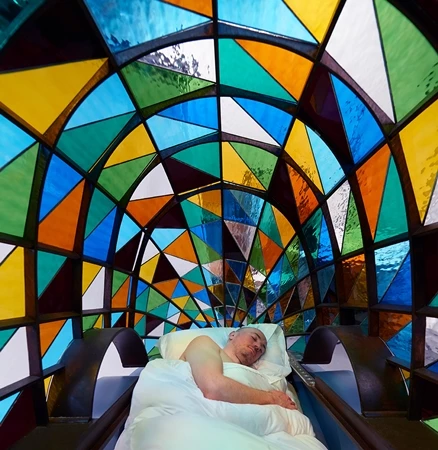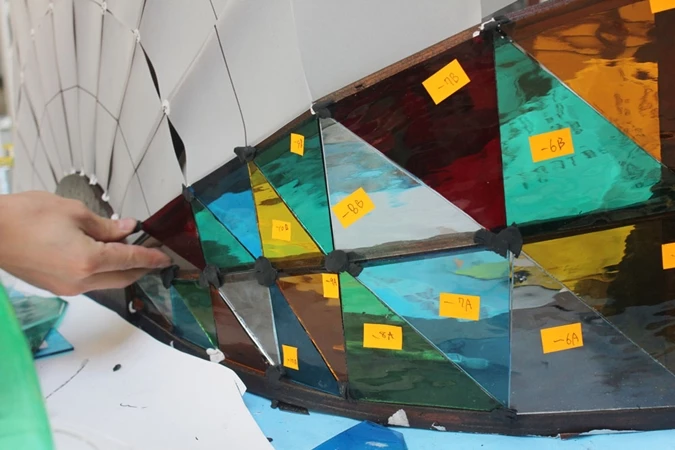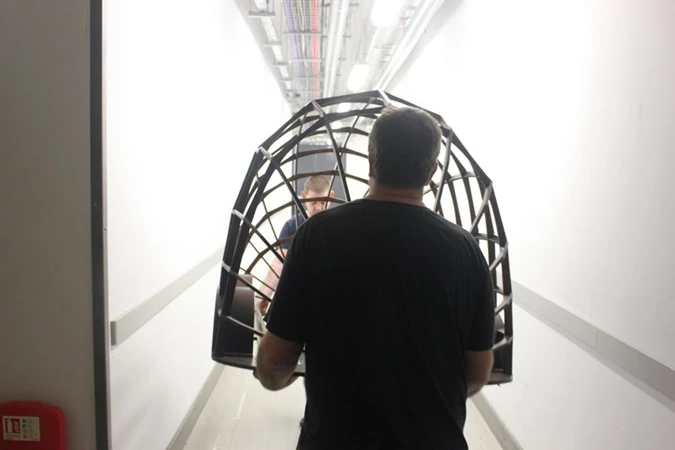Driverless cars are accelerating towards reality, with plans for UK tests next year, Audi being issued California's first autonomous driving permit and Elon Musk claiming that the technology is just five to six years from maturity. All this begs the question, what will driverless cars look like? If artist Dominic Wilcox has any say in the matter, they will look like mini cathedrals.
Wilcox created the Stained Glass Driverless Sleeper Car for the Dezeen and Mini Frontiers exhibition as part of London Design Week. His design is based on the supposition that, in the future, driverless vehicles will be much safer than those driven by humans and will therefore not need the same safety equipment that is present in today's vehicles. Nor, of course, will they necessarily need the controls that are present in today's vehicles.
"We will simply require a living space on wheels," posits Wilcox on his website. "The technology of the motor and driverless, automated navigation system will be held within a standard, modular chassis, on to which any living space shell can be built. I am presenting one example of the type of vehicles possible and have designed a prototype for a driverless car made from stained glass. This vehicle is a single person 'sleeper car', the occupant can sleep on a bed while the car travels to the destination of choice."

Wilcox's car has a rolling chassis with 10-inch Mini wheels. On top of that is fitted a stained-glass shell that lifts hydraulically to allow a person to enter the vehicle. The shell has a wooden frame that was created using a computer-controlled cutting machine.
The stained glass was fitted using the copper foil technique, in which adhesive strips of copper are used to line the glass sections before the sections are slotted in place and the copper strips are soldered together. Inside the car, there is only a bed, meaning the passenger can sleep whilst being driven to their destination.

The stained glass car is, of course, a fun, tongue-in-cheek concept, but its purpose is to make a serious point. The design and features of the driverless cars of the future are not yet defined and we have an opportunity to rewrite an aspect of automotive design as we know it. Rinspeed produced a more earnest idea of what a driverless car might look like last year, with its XchangE concept.
The Stained Glass Driverless Sleeper Car is being exhibited at the Dezeen and Mini Frontiers show in London until September 21st.
In the video below, Wilcox provides an introduction the the car.
Sources: Dominic Wilcox, Dezeen and Mini Frontiers

















